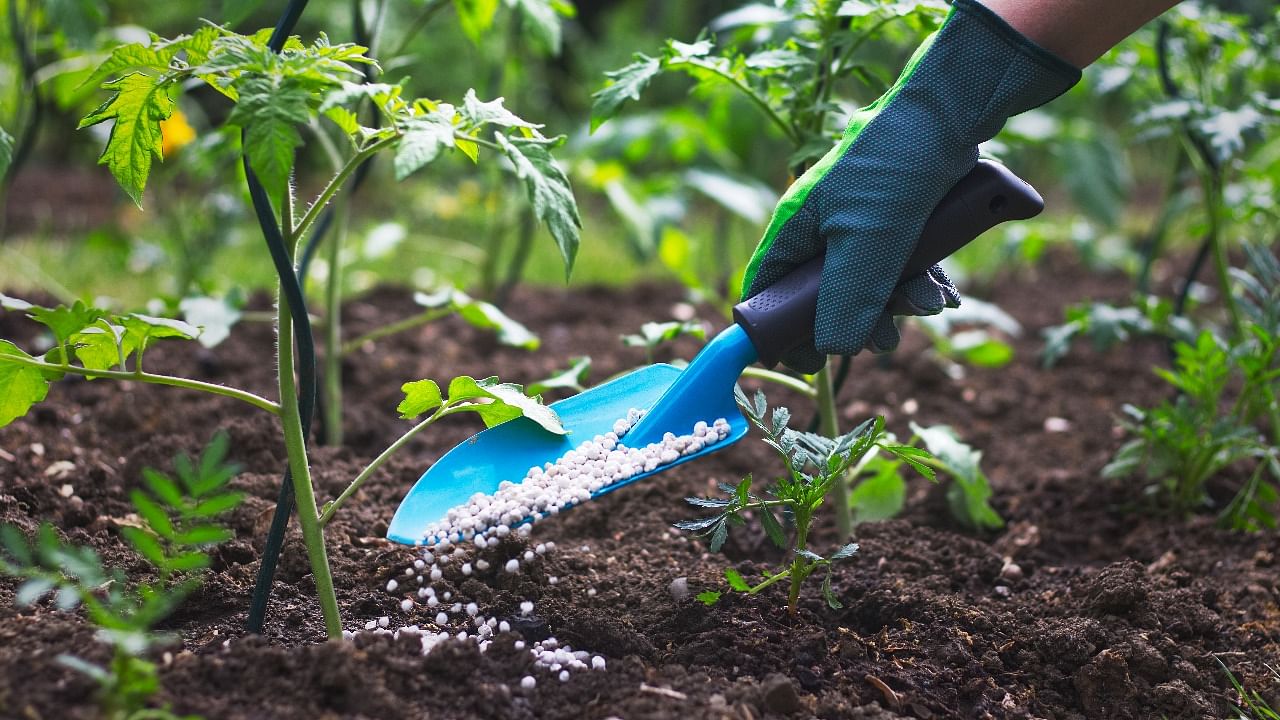
A major factor fuelling resentment among farmers is the spiralling prices of fertilisers that are critical in the production of agricultural products.
There are two types of fertilisers: Urea— the predominant source of nitrogen or ‘N’ nutrient supply— and phosphate and potash fertilisers— the source of ‘P’ nutrient and ‘K’ nutrient; there are 22 grades of such fertilisers and the most widely used are Di-Ammonium Phosphate (DAP) and Muriate of Potash (MOP).
The Maximum Retail Price (MRP) of urea is controlled by the Centre at a low level and is unrelated to the cost of production and distribution which is higher (the excess amount is reimbursed to the manufacturers via the subsidy on a ‘unit-specific’ basis under the New Pricing Scheme or NPS). This price has remained unchanged— today’s price is the same as in 2002— as all cost escalations are absorbed by increasing the subsidy. But, the worry is with regard to ‘P’ and ‘K’ fertilisers.
For these fertilisers, the Centre fixes a ‘uniform’ subsidy on a per-nutrient basis for all manufacturers under the Nutrient-Based Subsidy (NBS) Scheme. The latter are free to fix the MRP but are expected to reflect the subsidy. Unlike urea, where increasing subsidy helps in keeping MRP immune from cost hikes, the government is not prone to adjust subsidy on P&K fertilisers, generally—this means cost escalations lead to an ever-increasing price.
During 2020-21, the cost of production and distribution of a bag (50 kg) of DAP was Rs 1,700. Then, the subsidy was Rs 500, the manufacturers fixed MRP at Rs 1,200. In April 2021, due to the increase in international prices of phosphoric acid and ammonia (raw materials used in making DAP) by 60% to 70%, the cost of supply increased to Rs 2,400. This led them to increase the MRP to Rs 1,900 but the subsidy was kept unchanged at Rs 500. This infuriated farmers whom the Centre is trying to calm down by announcing on May 19, 2021, a hike in subsidy to Rs 1,200.
This may have helped in restoring the price to last year’s level of Rs 1,200, it is still 4.5 times the price of urea (Rs 268 per bag). P&K fertilisers face discrimination in other respects as well. On these, freight cost is reimbursed only towards primary movement (from the plant site to the unloading rake point) whereas, on urea, secondary movement cost up to the retail point is also given under a ‘uniform freight policy’. Moreover, while urea producers get priority in the allocation of domestic gas (key fuel used to make ammonia), P&K manufacturers are left to fend for themselves.
The policy tilt in favour of urea is at the root of its excessive use and results in an imbalance in fertiliser use. On an all-India basis, currently, the NPK use ratio is 6.7:2.4:1 against an ideal 4:2:1 with the attendant adverse effect on crop yield, health of soil and people.
Meanwhile, the steep hike in subsidy rates on P&K fertilisers will impose a huge cost on the exchequer. On sales during Kharif season (April to September) alone, this will increase the Centre’s subsidy bill by about Rs 15,000 crore. And if the raw material prices continue to stay at the current elevated level, forcing it to maintain higher subsidy even during Rabi season (October to March), it will have to shell out about Rs 30,000 crore. This will be over and above Rs 80,000 crore (urea: Rs 59,000 crore; P&K fertilisers: Rs 21,000 crore) provided for fertiliser subsidy in the Budget for 2021-22. This will be the second consecutive year when subsidy will cross the Rs 1,00,000 crore mark (during 2020-21, it was Rs 1,34,000 crore). This is unsustainable.
There is a dire need to adopt a policy that corrects the discrimination against P&K fertilisers and brings down the subsidy to a sustainable level.
The objectives can be achieved by aligning the policy for urea with that of P&K. This will require dismantling the existing unit-wise NPS for urea and fixing a uniform subsidy for all manufacturers. Furthermore, the subsidy on urea should be drastically reduced and subsidy on DAP increased (likewise for other P&K fertilisers) in a way that the MRP of the latter is no more than 2 times that of the former (today, it is 4.5 times). P&K fertilisers should also be brought under a ‘uniform freight policy’ to provide for reimbursement of both primary and secondary movement cost— as is applicable to urea. For allocating domestic gas, all fertilisers should be treated on par.
However, this is far from optimum as the sheer act of routing subsidy through manufacturers brings in ‘control raj’ and maladies such as misuse and diversion, benefit to undeserving (albeit large) farmers etc. There won’t be much gain in subsidy outgo either. All these maladies will buzz off if only the government removes all controls on fertilisers and gives subsidy directly to small and marginal farmers only.
(The writer is a policy analyst)